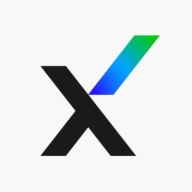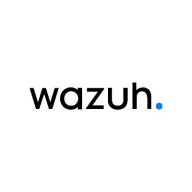

Trellix Endpoint Security Platform and Wazuh compete in the field of cybersecurity software. Based on feature comparisons, Trellix appears to have the upper hand due to its comprehensive management and threat intelligence capabilities, though Wazuh's real-time monitoring and open-source adaptability are notable strengths.
Features: Trellix Endpoint Security Platform is praised for its central management features that integrate various security aspects within a single interface. It adapts well to emerging threats and provides a robust solution for large enterprises. Wazuh is valued for its open-source nature and real-time monitoring, offering thorough logging and integration with existing systems. Although it lacks some of Trellix's advanced threat intelligence capabilities, Wazuh stands out for its flexibility and detailed reporting.
Room for Improvement: Trellix faces challenges with high resource consumption and complex configuration. Users desire better memory management, more efficient integration capabilities, and streamlined updates. Wazuh, while effective for smaller setups, needs better scalability and easier integration with threat intelligence sources, along with improved security features suited for large enterprises.
Ease of Deployment and Customer Service: Trellix offers deployment flexibility across on-premises, hybrid, and cloud environments, although its customer service can be inconsistent, with mixed reviews regarding response times. Wazuh's community-driven, open-source deployment model presents challenges for enterprises requiring professional support, yet benefits from a quicker setup process and commendable customer service.
Pricing and ROI: Trellix is perceived as expensive, but users see value in its feature-rich platform, which provides a solid ROI through effective threat management. Wazuh, being free and open-source, presents a low cost of ownership, making it an attractive choice for budget-conscious organizations, though additional costs may arise for professional support.
We have observed tremendous return on investment after implementing Trellix Endpoint Security as it is a more cost-effective solution compared to other products.
Clients appreciate the solution’s customization capabilities and ongoing product improvements.
There are two parts: one is the encryption which is standard and no AI is needed, but the data protection part could benefit from AI to detect new types of data and protect it.
I have seen value in security cost savings with Wazuh, as using proprietary EDR versions could save us substantial money.
The response time is a notable issue.
I would rate their customer service nine out of ten.
When we implemented Trellix Endpoint Security in their network, multiple malwares were detected.
They responded quickly, which was crucial as I was on a time constraint.
We use the open-source version of Wazuh, which does not provide paid support.
The documentation is good and provides clear instructions, though it's targeted at those with technical backgrounds.
I would rate the scalability of the solution as a six out of ten, indicating some challenges due to downtime requirements.
Trellix Endpoint Security is scalable.
It can accommodate thousands of endpoints on one instance, and multiple instances can run for different clients.
Currently, I don't see any limitations in terms of scalability as Wazuh can still connect many endpoints.
Scalability depends on the configuration and the infrastructure resources like compute and memory we allocate.
I would rate its stability as nine out of ten.
I would rate the stability of Trellix Endpoint Security as near perfect, close to ten out of ten.
I think it's stable enough; earlier it had glitches, but now it's stable enough.
The stability of Wazuh is strong, with no issues stemming from the solution itself.
The stability of Wazuh is largely dependent on maintenance.
The indexer frequently times out, requiring system restarts.
What needs improvement in Trellix Endpoint Security is the reduction of resource consumption by the scanning feature.
Improvements are needed in forensic analytics to detect specific vulnerabilities.
The product does not seem to be cloud-native.
Machine learning is needed along with understanding user behavior and behavioral patterns.
The integration modules are insufficiently developed, necessitating the creation of custom integration solutions using tools like Logstash and PubSub.
I think Wazuh should improve by introducing AI functionalities, as it would be beneficial to see AI incorporated in the threat hunting and detection functionalities.
The license costs are very reasonable, around 1,000 to 1,200 rupees per year.
Trellix Endpoint Security is cost-effective and provides excellent value for money.
Wazuh is completely free of charge.
I would definitely recommend Wazuh, especially considering Fortinet's licensing model which is confusing and overpriced in my opinion.
Totaling around two lakh Indian rupees per month.
Trellix Endpoint Security is a proven, robust, and cost-effective solution that protects the organization from different types of ransomware and attacks.
Including options like Application Control (formerly Solidcore), integrated monitoring, change control, DLP, and advanced threat protection, the solution offers comprehensive security.
The detection capability of Trellix Endpoint Security is higher than traditional antivirus solutions.
Wazuh is a SIEM tool that is highly customizable and versatile.
The system allows us to monitor endpoints effectively and collect security data that can be utilized across other platforms such as SOAR.
With this open source tool, organizations can establish their own customized setup.
| Product | Market Share (%) |
|---|---|
| Wazuh | 10.2% |
| Trellix Endpoint Security Platform | 3.6% |
| Other | 86.2% |


| Company Size | Count |
|---|---|
| Small Business | 67 |
| Midsize Enterprise | 36 |
| Large Enterprise | 59 |
| Company Size | Count |
|---|---|
| Small Business | 26 |
| Midsize Enterprise | 15 |
| Large Enterprise | 8 |
Trellix Endpoint Security Platform offers essential features like centralized management, threat prevention, and encryption, facilitating seamless scaling and integration with other systems while prioritizing user security.
This comprehensive platform focuses on endpoint protection, antivirus capabilities, and malware defense. It enhances cybersecurity with data loss prevention, advanced threat detection, and AI-driven features for reliable protection without impacting performance. Central management and advanced reporting streamline integration and ease of use. Flexible policy deployment through the management console and its robust security measures, such as DLP and device control, further increase protection. Challenges include high CPU and memory usage affecting performance, a complex interface, and lengthy deployment. Third-party integration and Windows Hello support need improvement. Additional concerns involve improved threat detection and faster technical support responses.
What are the key features of Trellix Endpoint Security Platform?Trellix Endpoint Security Platform is widely implemented in industries such as banking and government for securing mobile and desktop devices. Its capabilities cover network security, device control, and remote access protection, catering to diverse environments by offering robust cybersecurity management against advanced threats.
Wazuh offers comprehensive security features like MITRE ATT&CK correlation, log monitoring, and cloud-native infrastructure. It ensures compliance and provides intrusion detection with high scalability and open-source flexibility, ideal for businesses seeking robust SIEM capabilities.
Wazuh stands out in security information and event management by providing efficient log aggregation, vulnerability scanning, and event correlation against MITRE ATT&CK. Its capability to integrate seamlessly with environments, manage compliance, and monitor files makes it suitable for cloud-native infrastructures and financial sectors. Despite its technical support needing enhancement and opportunities for improving AI integration and threat intelligence, its open-source nature and cost-effectiveness make it appealing. Users can leverage custom dashboards powered by Elasticsearch for precise data analysis, even though there is a desire for a more user-friendly interface and better enterprise solution integration. Deployment may be complex, but its features contribute significantly to fortified security postures.
What are the essential features of Wazuh?Industries like finance and cloud infrastructure heavily utilize Wazuh for its security strengths. By monitoring endpoints and ensuring compliance with frameworks, companies can improve security posture and swiftly detect anomalies. The platform's focus on event correlation and alerts for security incidents is particularly beneficial.
We monitor all Extended Detection and Response (XDR) reviews to prevent fraudulent reviews and keep review quality high. We do not post reviews by company employees or direct competitors. We validate each review for authenticity via cross-reference with LinkedIn, and personal follow-up with the reviewer when necessary.